Correspondence from William Wordsworth:
To Allen Cunningham, January 8, 1827
To John Abraham Heraud, June 10, 1834
To Francis Merewether, August 7, 1829
Rare Item Analysis: Insights from Wordsworth’s Personal Correspondence
by Becca Craigen
By examining a few of Wordsworth’s letters housed in the lovely Armstrong Browning Library for my Romantic Poetry class, I was able to glean a far greater understanding of Wordsworth as an individual. Understanding the familiar way he communicates with friends and the struggles he faced with his eyes can give us a new level of understanding of his poetry. I will touch on the highlights of three letters in particular, to be found in the Armstrong Browning Library’s collection of 19th century letters. The transcriptions of the letters which are available in the library are very helpful to distinguish the meaning of the somewhat difficult handwriting.
In a letter to Allen Cunningham on January 8, 1827, Wordsworth requests a vote for John Kenyon for entry into the Athenaem, a prestigious club whose membership included literary figures such as Charles Dickens, Thomas Hardy, and J.M. Barrie. Whether or not this letter itself led to a vote, the ticket Kenyon received into the elite of literary society may have led to his connection with Robert Browning. Kenyon was the instrument of Elizabeth and Robert Browning’s introduction. It would require more research to know for certain, but it’s an interesting possibility to consider that this letter may have led eventually to the introduction of the Brownings. Regardless whether this history is true, the letter certainly shows readers of Wordsworth’s poetry that this man was actively engaged in helping the literary career of his friends where he was able. It demonstrates the importance Wordsworth places on loyalty and devotion in friendships, which may color the relationships of characters in his poetry.
On June 10, 1834, Wordsworth’s letter to John Abraham Heraud takes a slightly different tone. Heraud, an aspiring poet of only minor acclaim, has written to Wordsworth for a response to the book of poems Judgement of the Flood which he passed to Wordsworth through Robert Southey, a fellow poet. In the letter Wordsworth apologizes for not responding sooner, but says that he did not want to respond until he had a chance to read the poems himself. He speaks of his eye condition, which has restricted him from reading. He does not wish for others to read the poem to him, but nevertheless says that “No man can read your Works without feeling their power,” even though he has not read the poetry.
The contrast between the responses to Kenyon and Heraud is intriguing. Wordsworth supports Kenyon by attempting to get him voted into an elite literary society, but chooses to neglect Heraud’s poetry and flatters him through compliments that we are inclined to mistrust. Both are striving for prominent literary careers and hoping to get Wordsworth’s support. In order to fully understand why, I think further study of the relevant relationships between Wordsworth, Kenyon, Heraud, and Southey might be of interest.
It is important to note that Wordsworth’s eye condition is not simply an excuse, but seems to be a legitimate problem. He often had his letters transcribed by others, including both letters so far discussed. The final letter that I will discuss he penned himself, showing that either his eyes felt better, or that this personal letter to a friend was more important to him than the state of his eyes. A scholar may be interested in looking at more of Wordsworth’s letters to further insights into the effect the eye condition had upon his life and hence his poetry.
The letter of August 7, 1829 showcases that Wordsworth is a good friend. In his letter to Francis Merewether, Wordsworth speaks on family and personal matters, unlike the other more professional letters that I’ve mentioned previously. The first parts of the letter are an update as Wordsworth is helping Merewether to make a connection with John Wilson from the Blackwood Edinburgh Magazine, to help him get published. This subject feels similar to the previous letters, but in the second paragraph he discusses plans to visit his son John, which is certainly a more familiar topic than any broached in the other letters.
An intriguing point of this letter is that Wordsworth is connecting Merewether to Professor John Wilson, though his own relationship with him is rocky due to Wilson’s harsh critique of Wordsworth’s poem “The Idiot Boy.” Wordsworth’s hesitancy to make this connection is not clear in this letter, but I suspect would be in prior correspondence on this topic. Regardless of his feelings about Wilson, Wordsworth chooses to assist his friend, showing the priority he placed on devoted friendships.
In a simple overview of the highlights from these letters, we are allowed small insights into Wordsworth’s character. This man who has a level of understanding of pain can also take great joy in simple pleasures such as the companionship and the correspondence of a friend.
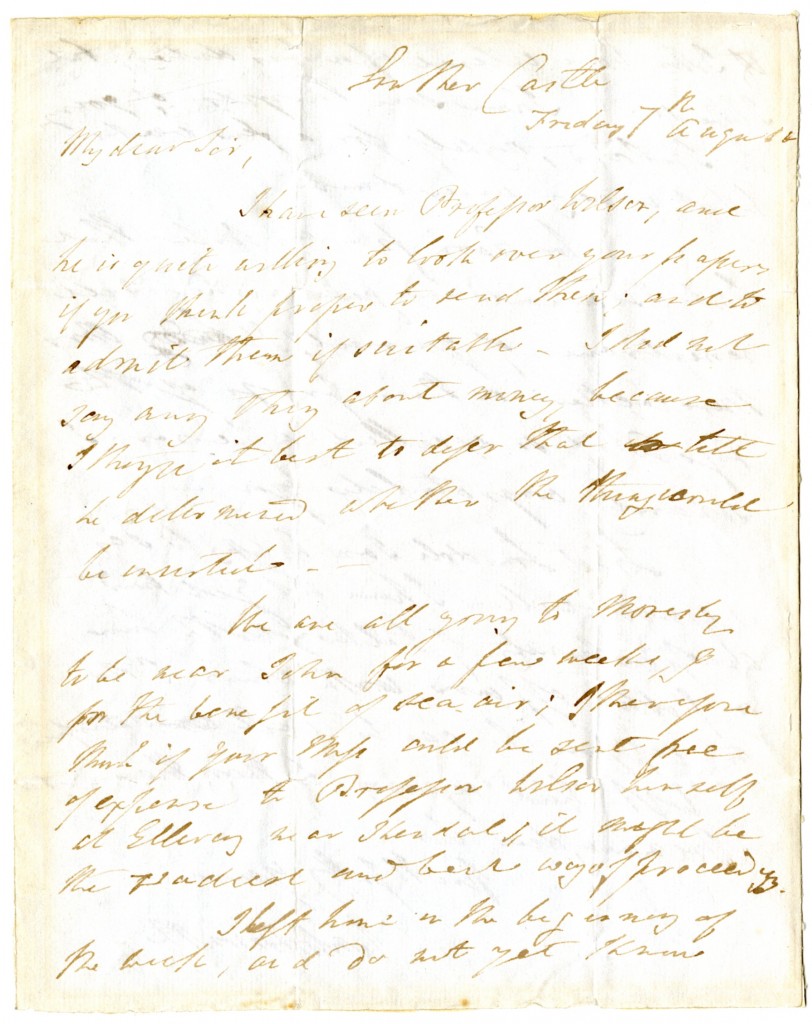 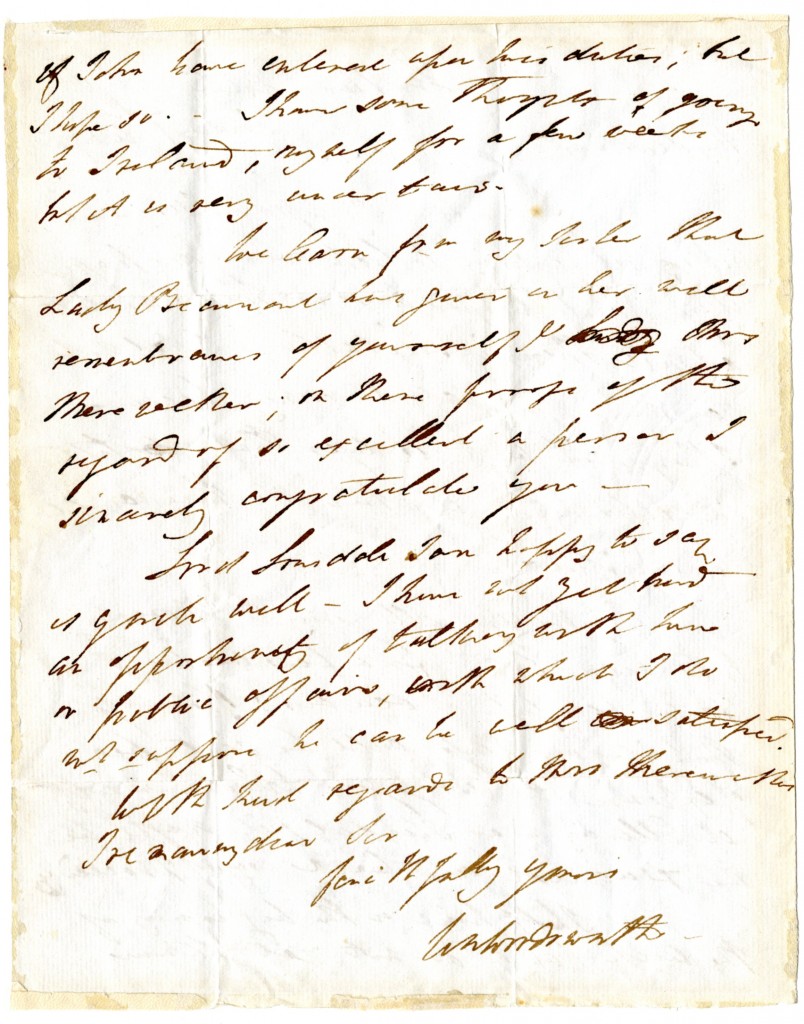  |
   |
 |
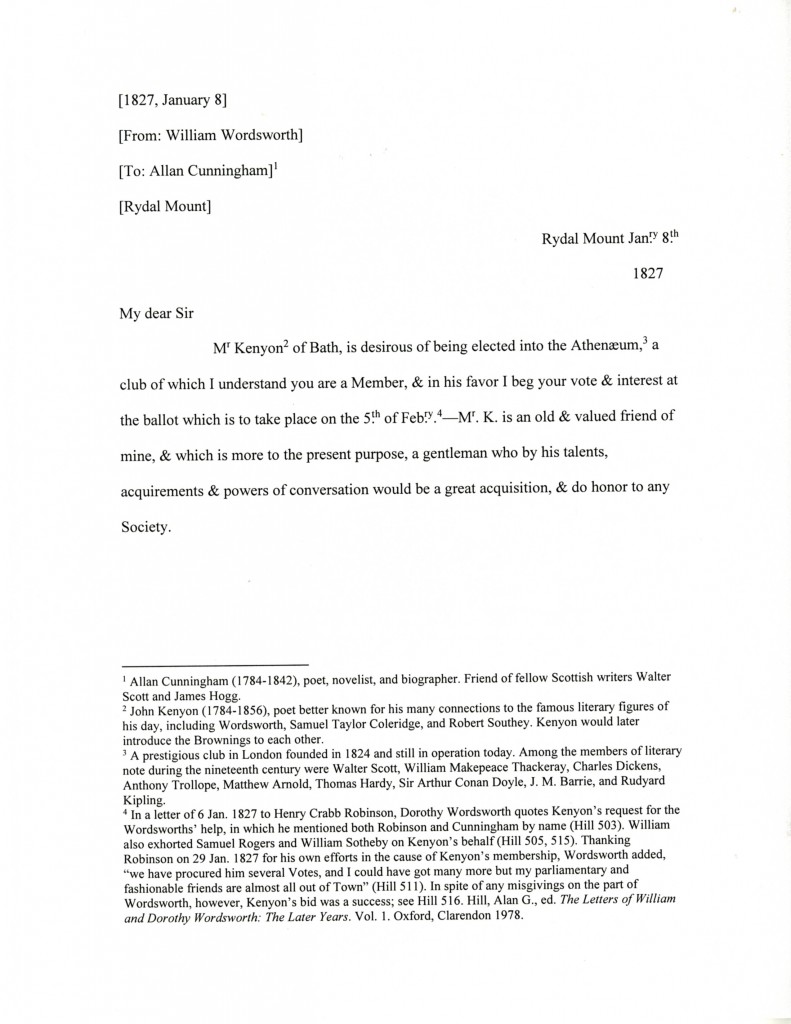  |
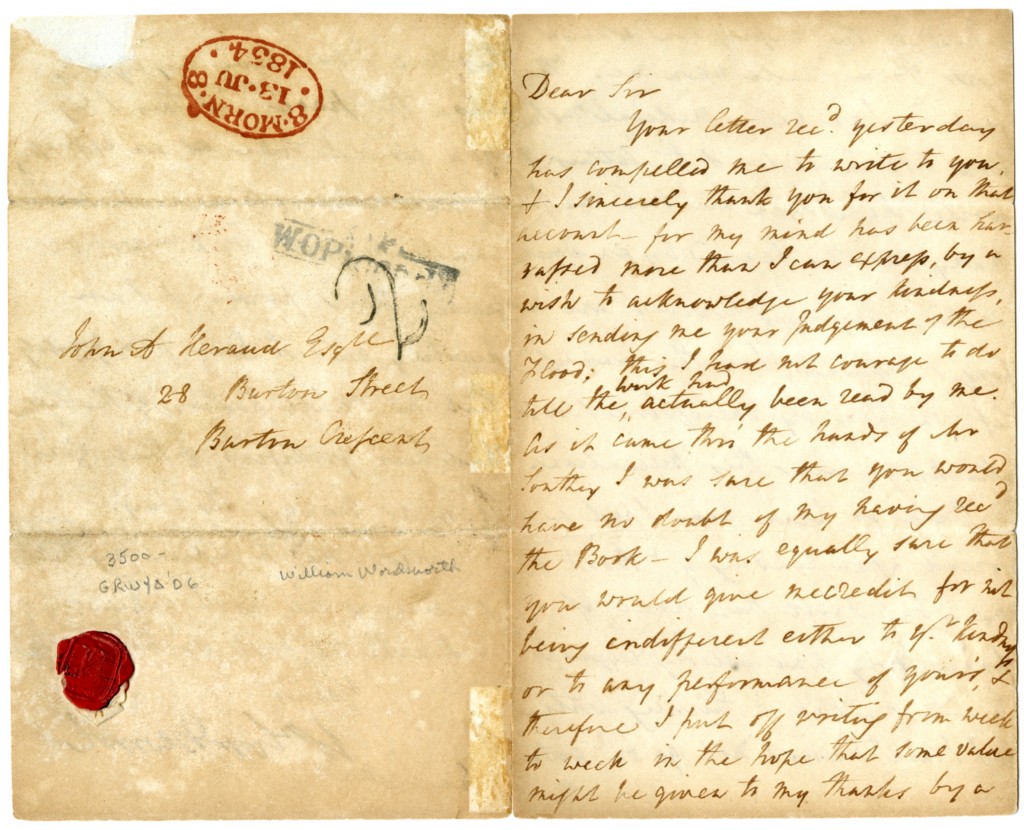 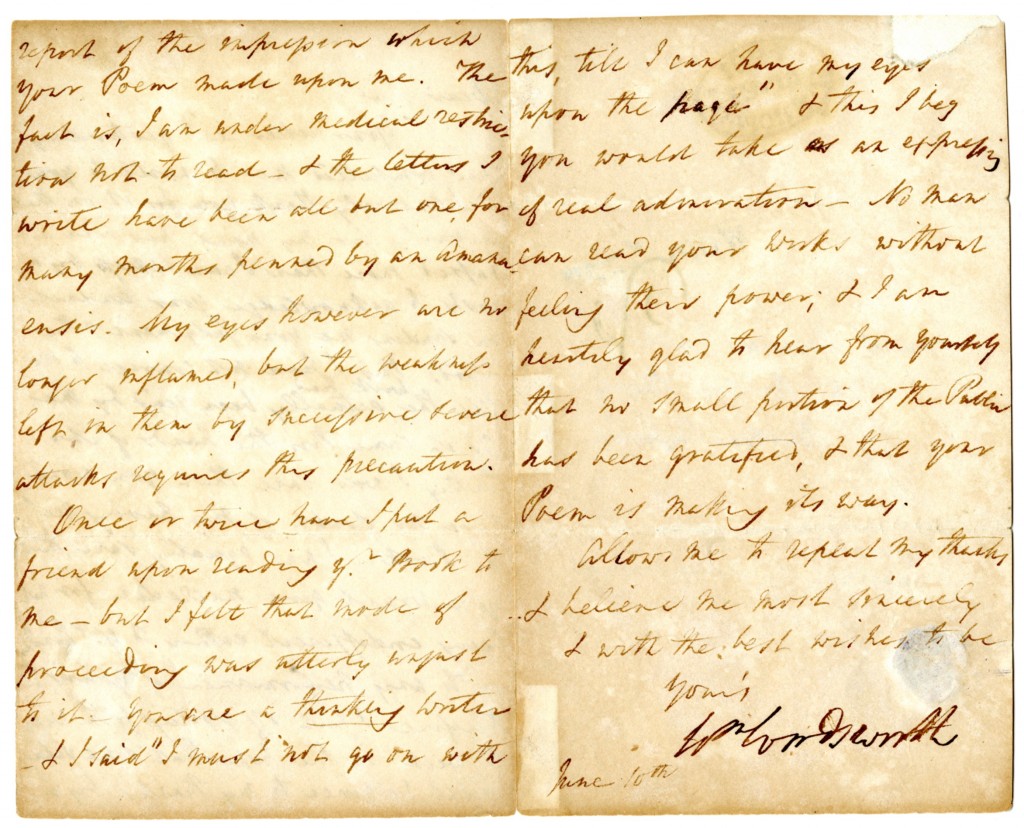 |
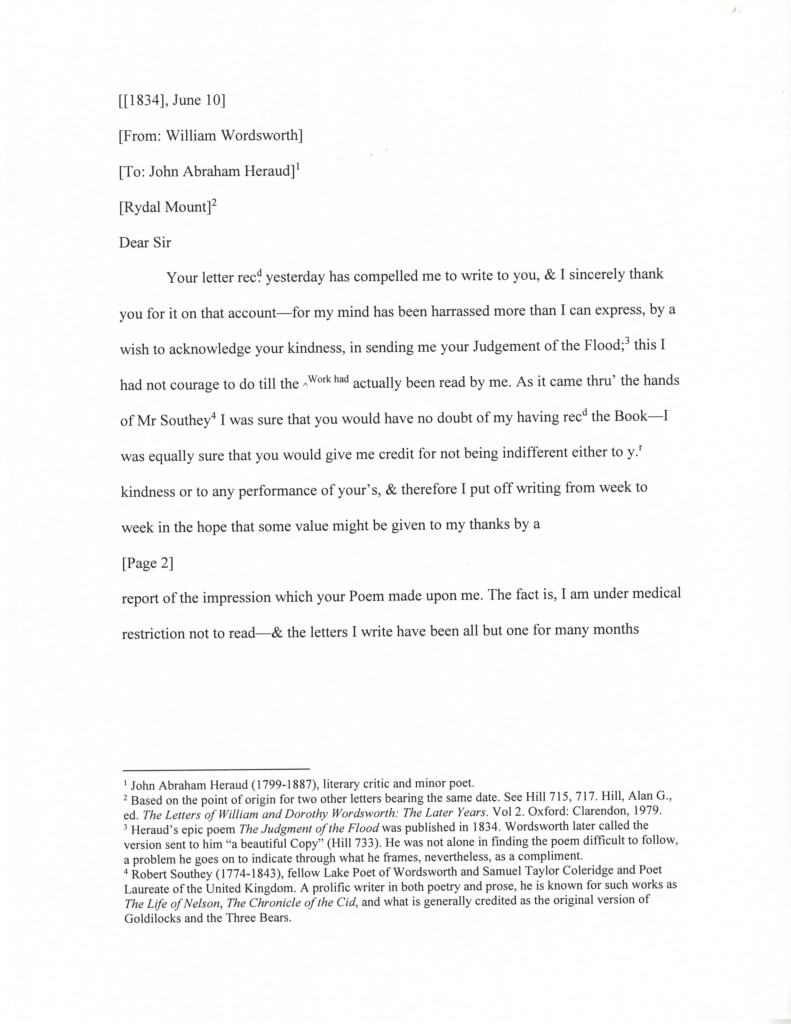   |
